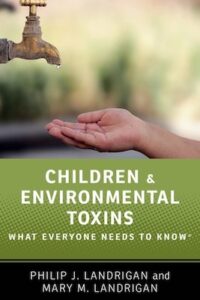 In 2014, the city of Flint, by then under the direct control of the state of Michigan since 2011, in an effort to save money while a new pipeline was under construction, had its water supply switched from that of a treated reservoir to water from the Flint River. Due to a pH difference – the river water being more acidic – the lead solder in the old pipes began to leach out into the water flowing into homes, schools, and businesses throughout the city. Residents noticed the strange taste, smell, and color within weeks. By 2015, testing “by the Environmental Protection Agency (EPA) and Virginia Tech indicated dangerous levels of lead in the water at residents’ homes.”
In 2014, the city of Flint, by then under the direct control of the state of Michigan since 2011, in an effort to save money while a new pipeline was under construction, had its water supply switched from that of a treated reservoir to water from the Flint River. Due to a pH difference – the river water being more acidic – the lead solder in the old pipes began to leach out into the water flowing into homes, schools, and businesses throughout the city. Residents noticed the strange taste, smell, and color within weeks. By 2015, testing “by the Environmental Protection Agency (EPA) and Virginia Tech indicated dangerous levels of lead in the water at residents’ homes.”
As of this day, the problem still has not been corrected.
What are and will be the effects on the people, particularly the children (upon whom such things are most significantly visited), of Flint from drinking lead contaminated water? Sadly, these are things known all too well to doctors and public health officials. The problem is that most of the general public doesn’t, and consequently too many no longer even talk about the crisis in Flint.
I sincerely hope that the publication of Children & Environmental Toxins; What Everyone Needs to Know by Philip J. Landrigan and Mary M. Landrigan will help draw more attention to Flint, and to so many of the other environmental toxins that up until recently the United States as a nation had been making progress in reducing. I like to think that more people would pay attention to problems like those in Flint if they better understood what was at stake.
